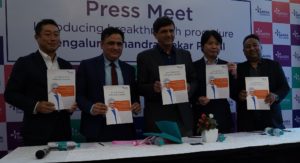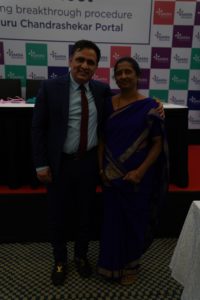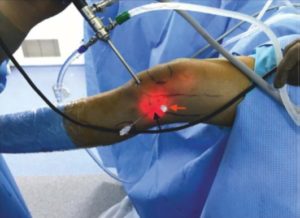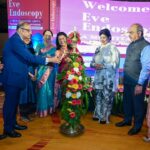

This newly devised portal serves multiple purposes – it can be used to address the pathologies of all types of injuries or broken LCL, Avulsion Fractures, Calcium Apatite Deposition Disease (CADD), Popliteus and Anterolateral Ligament (ALL) Reconstruction.


This technique was conceptualized to prevent tearing of the ligaments during open surgery and was conducted on a cadaver study on both the knees at a cadaver lab and further dissected to know the safety of the portal. The process involves incision to reach the part in the outer ligaments of the knee without damaging the LCL fibres and peroneal nerve (a branch of sciatic nerve that originates from the lower spine required for movement) while making the portal. Cases of pathologies in the LCL are rare and occur in about 1 in 1,000 cases.


“My health condition had started to worsen over the time despite undergoing various treatments. My movement had become restricted, due to which I become highly dependent on my family members to carry out my daily routines. I met Dr Chandrashekhar at Sakra World Hospital who explained the health condition I was suffering from in a simpler way and cleared my doubts about the new type of surgery that he suggested to conduct. Not only the surgery improved my health significantly, it helped me regain my strength to move without any support. I would like to thank Dr Chandrashekhar for giving me a new lease of life,” said, the patient.
The new technique has been accepted and published in the Global Journal of Medical Research that serves as a knowledge-sharing purpose for the medical fraternities globally.
Case Scenarios:
Case 1: A 50-year-old lady presented with pain in the left knee of one-year duration. There was no improvement with conservative treatment in the form of anti-inflammatory medication and physiotherapy. X-ray of the knee showed calcification in the LCL region. MRI scan showed intra-substance calcification in the LCL near the femoral attachment and associated medial meniscus root tear. With no improvements with medications and conservative methods of treatment for one year, the patient opted for our treatment plan of arthroscopic meniscal root repair with concomitant arthroscopic excision of LCL calcification.
Case 2: A 54-year-old lady presented with left knee pain of 6 months duration. She was treated with anti-inflammatory medications and physiotherapy. But the symptoms showed no improvement. X-ray showed calcific deposits in the lateral side of the knee. MRI showed calcific deposits at the femoral attachment of LCL. Since her pain interfered with daily activities, arthroscopic excision of calcific deposits was considered.
Both cases were operated after institutional ethical committee clearance. The two cases reported here were operated using the new “Direct Lateral Portal/Bengaluru Chandrashekar Portal” after obtaining written informed consent with a prior explanation of the procedure. Dr Chandrashekar P is one of the most revered doctor of the country and is a mentor for many across the globe. He is the first Orthopedic surgeon to start knee resurfacing in South India and has completed over 10,000 knee surgeries. Also, he is the first Orthopedic surgeon to start Minimally Invasive Computer Assisted Knee Replacement Surgery in Karnataka.












